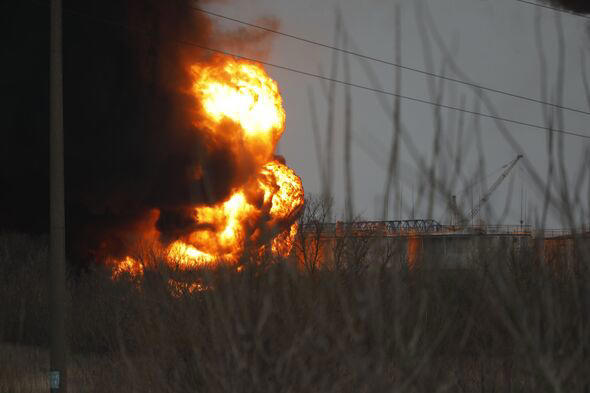Putin facing stark reality over 'brittle' war machine as Ukraine strikes increase
Story by Falyn Stempler
• 2h
A fresh analysis found that Russia's economy might be in more dire straits than President Vladimir Putin purports.
Putin has painted a picture of Russia's resilience in the face of Western economic sanctions. However, analysts note, to achieve this, Russia has had to ramp up defense spending to 40% of its federal budget for weapons factories and increase its reliance on trading with China to modernize its military and maintain its war efforts in Ukraine.


At the same time, Russia aims to grow and build its military to take on NATO, which analysts suggest it can accomplishwithin seven to 10 years. This will require training troops for combat, replacing its heavy equipment and rebuilding its weapons stockpile.
However, in the meantime, Putin has still managed to test NATO by launching "cheap" cyber and sabotage attacks, including violating airspace in Poland and Estonia last month, following U.S. President Donald Trump's return to office.
While government spending and high export prices have allowed Russia to outperform economic expectations, it is still facing fiscal struggles, labor market and defense shortages and difficulties obtaining critical technologies and resources because of sanctions, according to a war analysis in Foreign Affairs.

Ukraine strikes fuel depot in Russia's Belgorod, regional governor says© Getty
Author Alexandra Prokopenko argues that these "specific long-term vulnerabilities of the Russian economy" that have been revealed after more than three years of war must be "exploited now" by the United States and Europe to "defeat Putin's grand goals."
She urges Western nations to further tighten export controls on optics, semiconductors and machine tools, squeeze oil and economic sanctions and attack supply chains Russia uses in lieu of Western supplies while it remains weak and vulnerable.
In the report, the author notes that Russia's ability to modernize its military is limited by the fact that the Kremlin seeks to avoid turning its workforce into a full wartime economy in fear of shortages and protests.
As a result, it has had to prioritize ramping up drone and ammunition lines while neglecting other critical efforts such as updating frontline armor.
Meanwhile, the workforce is already experiencing labor shortages as 70% firms have reported shortages exacerbated by the frontline losses of working-age men, which estimates put at more than 219,000 deaths.
She also notes that GDP growth has slowed while its 2026 defense budget flattens, further reflecting economic constraints. |





